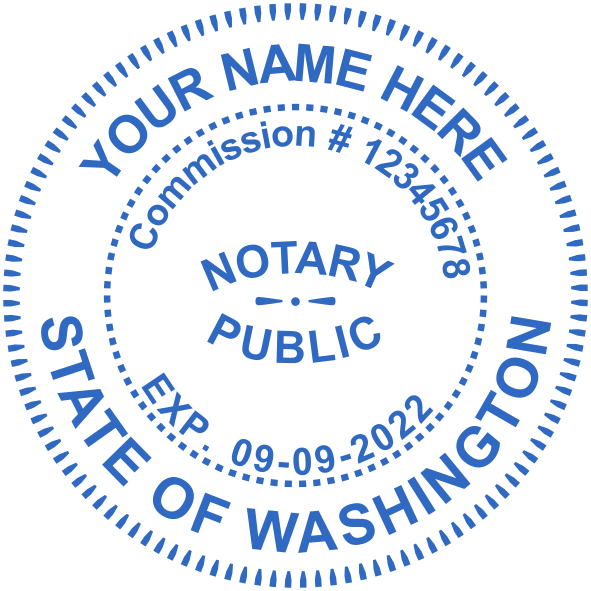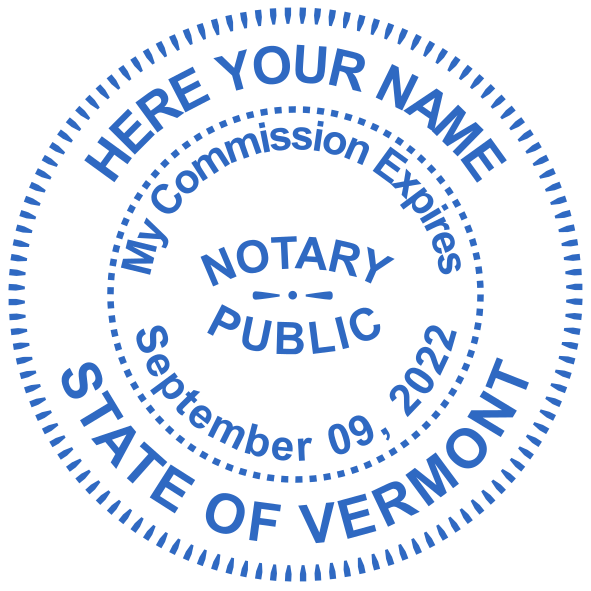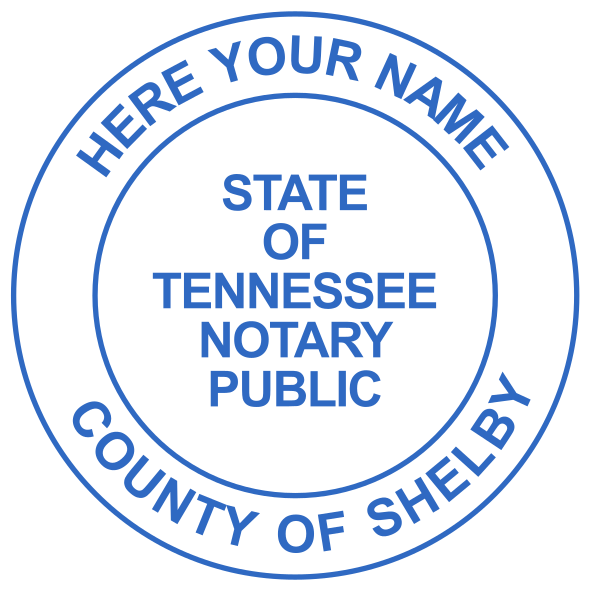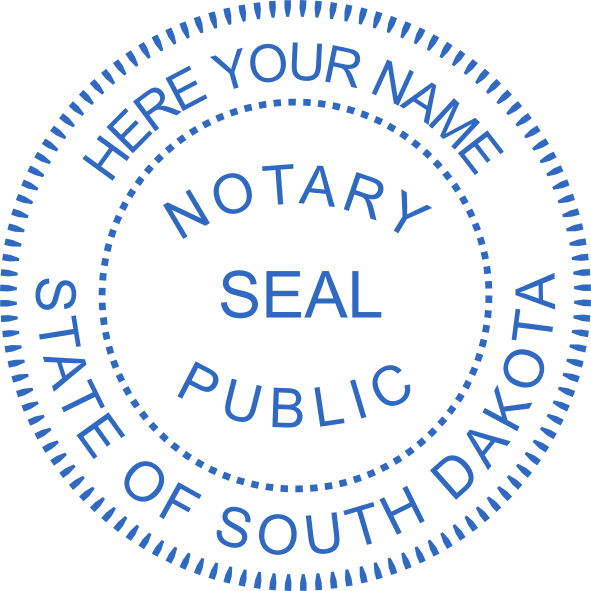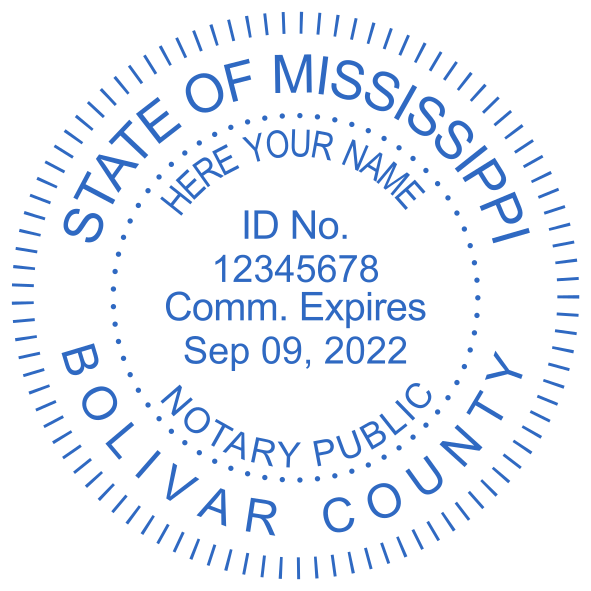Electronic notary seal

Reusable templates
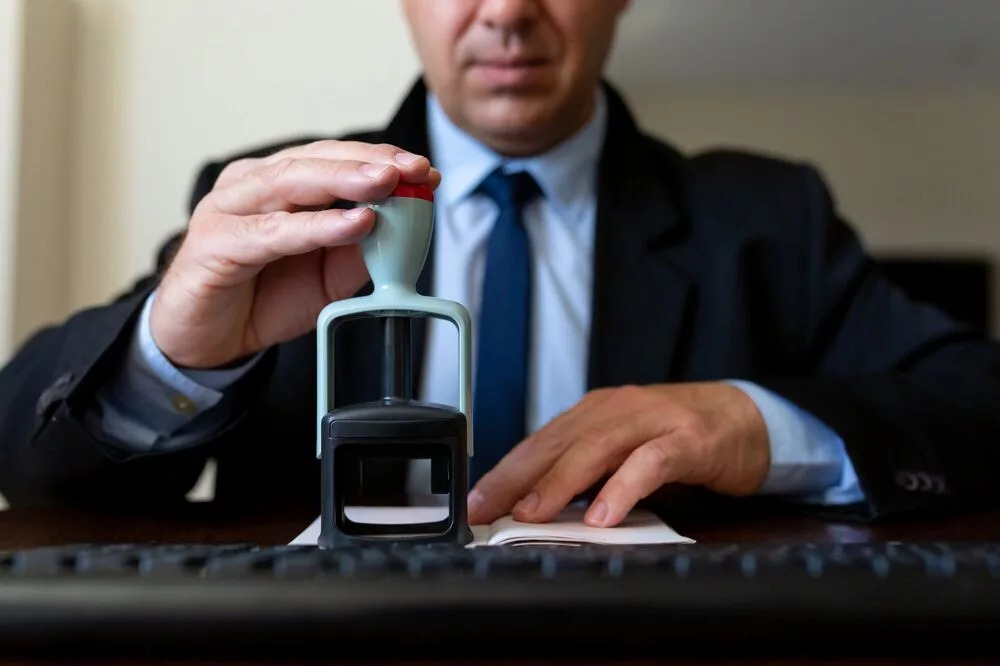

Create your digital notary stamp in vector format.

With our SVG layout, you can order the production of a physical seal from any nearby seal manufacturer.
The traditional notary seal
A traditional notary seal, or a stamp, is an embosser or a metal plate with a text or sign that produces a raised imprint на бумаге. The office of notary public has existed for as long as the human civilization itself. The first notaries appeared in Mesopotamia and Ancient Egypt in the 6-5 centuries BC, and the process has largely remained the same until this day.
The task of a notary has always been to validate a document, especially some kind of agreement between the parties. Sometimes the notary seals also confirm such справки, as apostilles or wills.
A traditionally notarized document includes a seal, a notary’s signature, commission information, the date, and some other important details. Due to the age-long practice of traditional notary services, they are duly considered by the majority of users as the most trustworthy form of validation.
This kind of validation is used by architects, engineers, and other professionals who are regularly contracted for services and may need to witness an agreement or a proxy.
Notary Seal in Digital Format
What does a notary seal look like?
A traditional seal usually comes in one of three shapes: rectangular, circle, or triangular. These shapes can also be reproduced by a graphic electronic seal. Material seals usually have a wooden, metal, or plastic case and handle, a rubber embosser, and an ink pad to add the color. Historically, seals used to be red, but with time more colors were introduced. Today, the range of colors includes black, blue, red, purple, and even green.
Notary seals may be both traditional stamps and electronic encrypted files. In both cases, they are added на справку to verify the signers, the subject and terms of contracts, and the date and time when the agreement was made. Unlike traditional seals, electronic seals are compatible with any document, as long as it comes in digital form. They boast a higher level of privacy and security. Digital seals work as a perfect solution for customers who require an on-going notary service for their business needs.
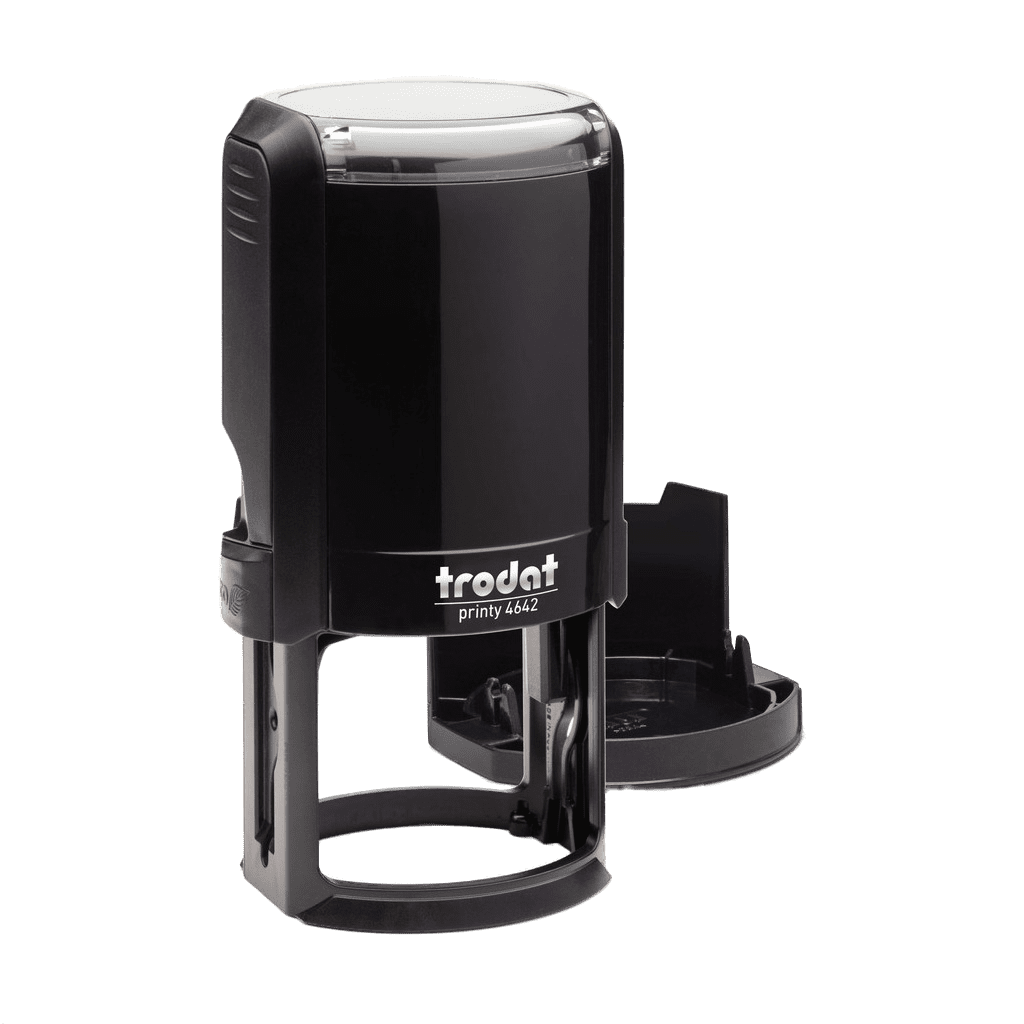
Notary Seal Designer
How is a seal created?
An electronic notary seal, issued as a digital certificate produced by a trusted authority, provides unique identifying information making it easy to verify the notarization or to witness the instance of fraud. This login feature is crucial for agencies and individuals seeking compliant solutions. Another feature of electronic seals is encryption. Cryptographic algorithms restrict the ability to make alterations to the documents, ensuring that the notarizations are both valid and legal according to federal laws and regulations.
As a result, such document and the notary seals cannot be changed, tampered, or counterfeited, thereby protecting personal and professional transactions. Additionally, with the integration of mobile technology, users can skip the traditional process and enter the digital era of notarization. Since the moment of its creation, a seal and the data it stores are embedded in the document itself. Any alterations to the document invalidate the notarization, emphasizing the importance of secure and compliant tools for notarizations.
Our website, notaryseal.inc, offers a variety of programs and services, catering to the needs of different teams, from basic users to large corporations. Our community of partners and third-party agencies plays a vital role in enhancing our solutions. For more information on careers, partners, and how to purchase our services, please view our website. All rights are reserved under identity laws, emphasizing our commitment to protect and uphold the integrity of every transaction.
Get stamp ideas and promotions, plus a line to the newest stamp and embosser products to save you time, money, and frustration.
Testimonials



Remote Online Notarization (RON) in the United States
Frequently asked questions
To sum up the material, here are some answers to the frequently asked questions provided.
How is an electronic seal used?
This seal is used to notarize digital documents. Its application depends on the kind of seal. For example, a graphic electronic seal will appear as an image. Today, however, a seal also comes as an invisible string of characters associated with a specific certificate. Whatever the form, an electronic seal is still used to verify and validate the agreements and proxies, and to confirm the signers’ identities.
Is online notarization secure?
The advance of digital technologies has made it possible to perform some operations remotely. This, in turn, has required that secure mechanism for data transmission be developed. Today, online notarization is totally secure. A mechanism similar to block-chain is used here: an eSeal is a special digital protocol that is appended to a specific document. If either a document or a seal has been altered, neither of them retains their validity. The process of notarization will have to be undertaken again. It is for this very reason that eSeals are widely used and recognized by third parties, including government bodies and courts.
What are the benefits of remote online notarization?
The process of remote online notarization (RON) has many benefits. First of all, you and your notary no longer need to meet in person. You can discuss the matters over the phone, via Zoom or Skype, prepare the electronic copies of the documents, sign and seal them digitally. Not only does this save much time, it also allows to find the best notary service anywhere in the world. Alternatively, your notary may relocate to a different state or county – and still be able to provide their services. You are no longer limited to notaries close to home.
The second benefit of remote notarization is its security. As was noted above, special encryption mechanisms make electronic seals tamper-proof.
Furthermore, once created and certified, an electronic document can be sent to different receivers as many times as necessary. In traditional notary world you would have to make multiple copies of a document, which meant increased expenditure. Online “stamps” or certificates save a lot of money, not to mention all the convenience of correspondence and the quality of files.
When Will I Get My eSeal?
If you are a notary, we recommend filing an application with some authorized bodies, like Identrust or Docusign. These are official eSeals providers, although you are free to choose another company.
If you are a prospective signer, please contact your local notaries to inquire whether an electronic seal can be applied to your files.
How do I get an electronic notary seal in California?
If you a notary doing your business in California, you can obtain your given seal from several authorized providers.
How does the Notary eSeal differ from a traditional seal?
The principal difference between these two seals is that a traditional seal is, in fact, a physical object. You can see it with your eyes and touch it with your hands. An electronic seal is a digital protocol and, like all digital objects, is intangible.
Where does the seal go on a certificate?
The seal traditionally goes at the end of the certificate.
Does CA allow electronic notary?
The state of California allows electronic notary services.
How much is a notary seal in Virginia?
According to the State of Virginia Code, the maximum fee of a notary service is $5. However, the notaries in this state usually charge less, and so a typical notary seal price in Virginia is $2-$3. These professionals attempt to keep their pricing competitive, which helps them to attract and retain customers.
Does a seal count as a signature?
No. In both traditional and electronic notarization processes a seal alone is not enough to validate a document. It has to be sealed and signed by the notary.
Is HD-Stamp an electronic notarization?
Yes, an HD-Stamp is an image of a physical stamp that can be used as an electronic notarization.
Can HD-Stamp be used for online notary?
Yes, online process may use HD-Stamp.
Can I notarize a handwritten document in California?
Any kinds of сертификатов can be notarized by a notary public, although there are some exceptions. However, only electronic copies may be verified with an eSeal. This is true of California as of most other states. This means that if you want to notarize a handwritten document you have to photocopy it and to append a digital signature. A photocopied signatures cannot be authorized by notaries.
What color is a notary stamp?
This stamp is usually colored blue, black, red, green or purple. These are traditional notary seal colors. However, not all of them can be used for any purpose; indeed, some states prohibit the use of certain colors. For example, in Utah notary stamps must be purple, not black, whereas in Texas a black stamp is prohibited.
What documents cannot be notarized?
The following certificates cannot or must not be notarized:
- birth certificates;
- photographs;
- blank or incomplete certificates;
- documents where the names do not match the IDs provided;
- faxed or copied signatures;
- wills;
- documents that represent a conflict of interests.
The latter three types may require some clarification. Faxes and photocopies may be notarized providing they bear original signatures. Wills may only be notarized if an attorney advised the signer to produce a proper copy; in this case the notary himself writes the text of the will. Finally, if the notary acts as a party to the document or has a financial or any other interest in making and signing a document, then the notary must never notarize this kind of certificate himself. Likewise, never should a notary witness their own signature!
Can a notary place a seal anywhere on the document?
A seal must be placed at the end of the certificate, together with a notary’s signature, a timestamp and commission information. On occasion, depending on specific requirements, a seal can be “printed” at the bottom of on every page of a document.
Is online notary legal in USA?
Yes, an online notarization process is legal in the United States.
Can a notary accept an expired ID in California?
Under no circumstances can a notary accept an expired, altered, or damaged ID. That being said, in the states of California and Tennessee the notaries are allowed to accept an expired ID card within five years of its date of issue. This means that if a signer’s ID card was issued on October 1, 2005, it is subject to renewal by October 1, 2010. The notary may be able to use it until December 31, 2005. By that time the expiration date will have passed but the five years since the date of issue have not.
Nevertheless, even if you state allows to an expired ID, it is not recommended to rely on the law. It may be different in other states where your notarized document will be considered invalid.
What color ink should a notary use in Texas?
Different states can use different stamp colors. In Texas, it can be any color, except black or yellow.
Why do notaries keep journals?
Notaries have kept journals since the beginning of their profession. The primary reason for keeping a notary journal is the same as for keeping the account books: this is the proof of business and its financial transactions. Another reason concerns the documents: some of them have an expiration date, a certificate title, a signer’s information, etc. For this reason, it is important to make an entry in a notary journal of when this kind of сертификат was produced and its validity period.
What if you make a mistake on notary journal?
If a mistake was made on a notary journal, it has to be properly corrected. No correction fluid is allowed. The following information is typically recorded in such a journal and is considered mandatory:
- the notarial act;
- certificate title;
- signer’s ID;
- date and time;
- fee;
- signer’s signature;
- thumbprint (if required).
Therefore, if a mistake was made in any of these entries, should cross out the incorrect information and write the correct one. There is no mandatory requirement that only one line should be used per entry, so other lines can be used to provide correct information. However, the entries in the journal must normally follow one after another, so it will appear suspicious should the notary decide to alter a week-long entry. For this reason, notaries are very diligent in keeping their journals, and a responsible signer will also carefully read the entry for possible errors.
How is a notary eSeal stored?
A notary public eSeal is a secure online protocol. It can be stored on a cloud server or on a flash drive. Using a drive as a storage place for an electronic seal on a drive means a notary must always have access to a computer or a laptop. Storing an eSeal on a cloud server means that the access to the Internet is always required. In addition, a secure platform from a reputable company should be used for cloud storage. Perhaps, it is best to store the eSeal in both places, to ensure maximum accessibility.








